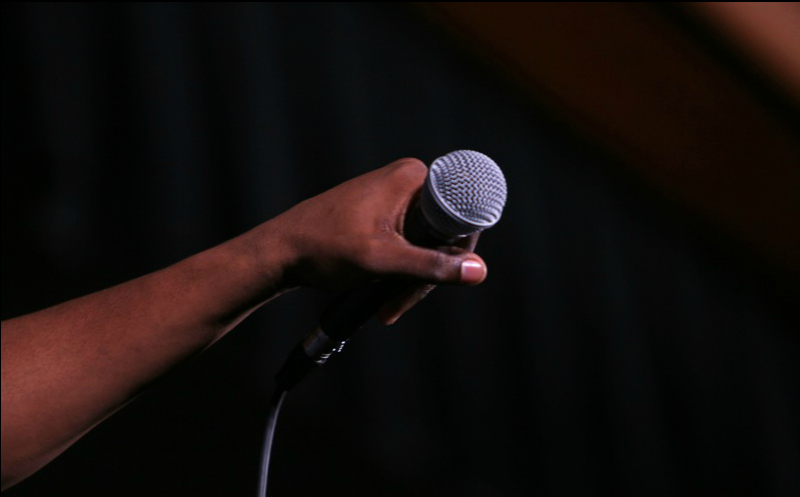As students flock to the library in preparation of this week’s exams, we see the rare instance in which the university’s study spaces attract more visitors than Iowa City’s bars, even on a Saturday night.
Vince Staples’ performance at the IMU at 8 p.m. Dec. 12, too, took a hit from this unfortunate timing. What might have been the biggest performance of the year, had it fallen on an earlier date, (SCOPE must be credited, scoring Staples was an impressive feat) was still a success, despite the IMU Second-Floor Ballroom only at half capacity.
One distinct advantage to attending concerts of artists who are rising in popularity but haven’t quite broken into the main stream, is that the crowds—no matter how big or how small—tend to really be there for the experience, not just to say, “I got to see so and so live.”
As Staples ran through his set, the energy of the crowd (and of Staples) increased with each song. By the time the night was coming to a close and the opening sirens of “Blue Suede” rang out, the entire room was electric. Staples was literally buzzing around the stage, dancing frenetically, aware of his ability to captivate the crowd but still clearly performing for his own pleasure.
Staples, famous in the rap industry for his sobriety — he has said he doesn’t drink or smoke, and he barely enjoys partying — is a uniquely pessimistic character. Unlike some other artists, however, Staples does not appear overshadowed by his pessimism and instead treats it as a core aspect of his persona.
While Kendrick Lamar projects optimism in his music, he is still conflicted, depressed, and at times — he has said — even suicidal. Staples, too, has rapped about suicide, most explicitly in “Jump off the Roof,” but there is a clear difference between the approaches of the two. In the chorus to “Jump off the Roof” (“Highway to hell, and I’m speedin’/One way to tell if I’m breathin’/On three let’s jump off the roof”) Vince treats suicide as nothing more than another adrenaline rush and nearly strips it of any of its darker, fatal connotations.
Click here to check out a photo slideshow.

In many ways Staples is the perfect spokesman for the millennial generation, a group of teens and 20-somethings jaded by postmodernity and the world they grew up in. The world-weariness and paranoia that run through the nervous system of Staples’ music is highly representative of the intense skepticism and disillusionment such a large part of this generation feels.
In “Senorita,” a clamoring Staples recounts the hyper-violent culture of his youth (“That’s somebody’s son but a war to be won/baby either go hunt or be hunted/we crabs in a bucket, he called me a crab so I shot at him in front of the Douglas”). While the events described are mortally intense, Staples delivers them — even in concert — with a demeanor and a cadence relaxed and even languorous. It is clear the sheer frequency of these events has caused Staples to become desensitized to their severity.
Staples’ deadpan delivery and sarcastic character were put on full display when he paused the show for 10 minutes to describe an outing he had while on tour in Madison, Wisconsin. He recounted an evening in which he and his ensemble wanted to order chicken wings from a local restaurant, but, because their tour bus was just outside the business’ delivery area, they were refused service. The event was of clear importance to Staples, who spent an evening a few nights ago ranting about that very occurrence on Twitter.
After the story was done and the laughter had died down (at one point Staples incited the crowd to start chanting “F– Wings over Madison”) he returned to his set list, seemingly re-energized by the humorous anecdote.



